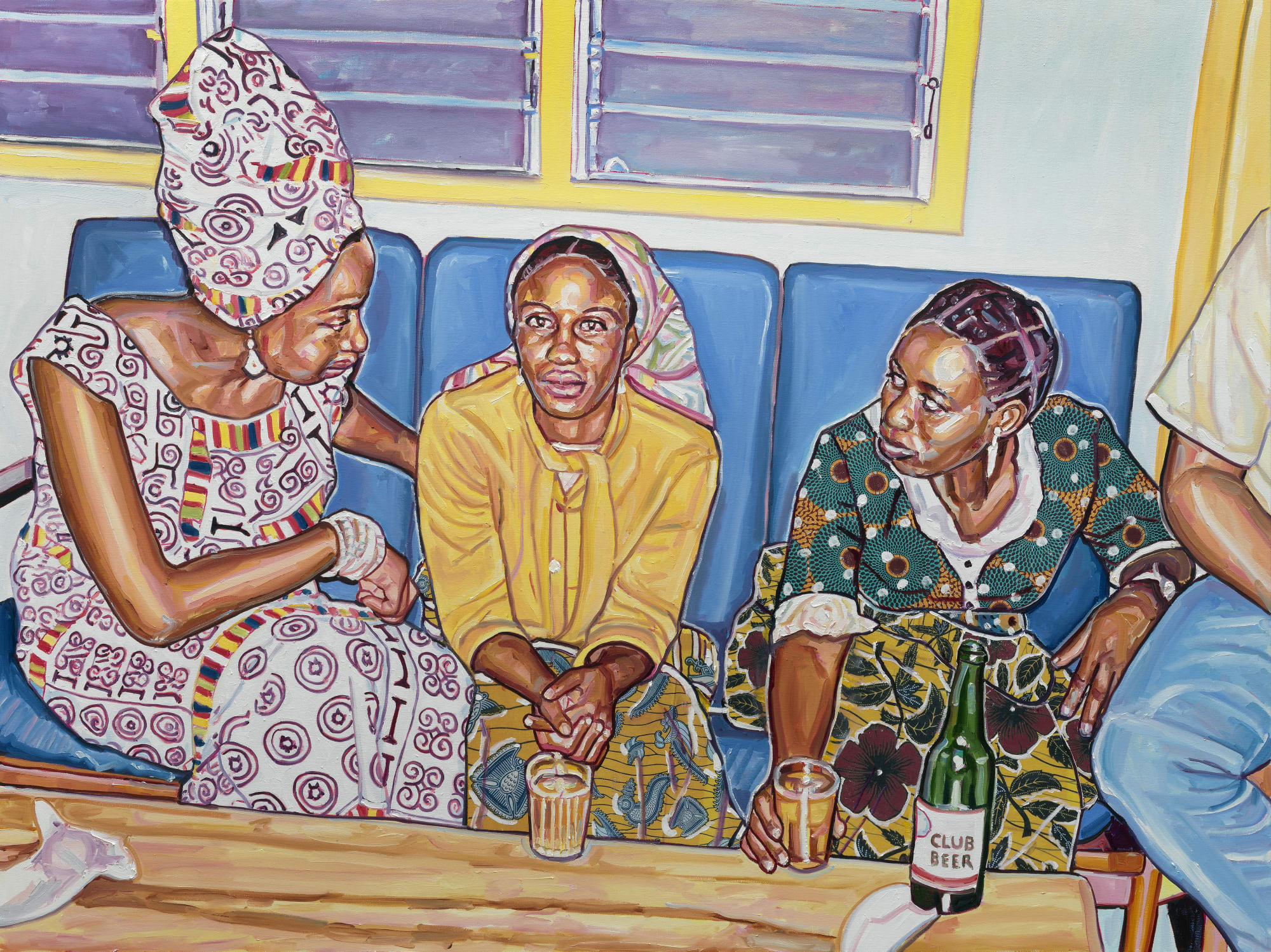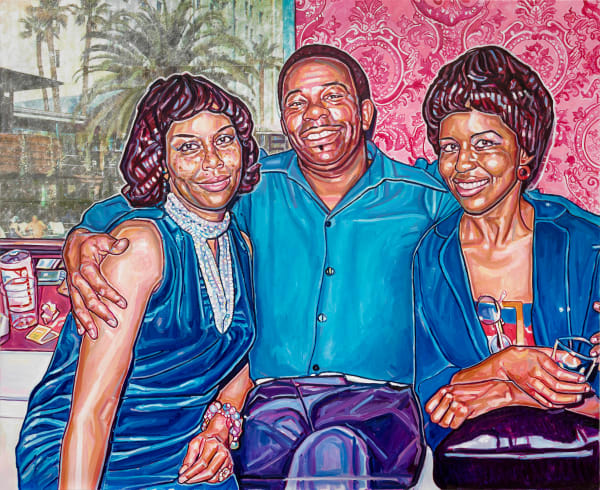they ask me to remember
but they want me to remember
their memories
and i keep on remembering
mine.
⁃ Lucille Clifton, “why some people be mad at me sometimes,” The Collected Poems of Lucille Clifton: 1965-2010
We are pleased to present the second solo exhibition of Esiri Erheriene-Essi at our gallery in Brussels. The paintings in Mother Tongue are a continuation of her ongoing exploration and celebration of the everyday stories and ordinary moments, the untold, often forgotten, and even neglected narratives of people of the African diaspora.
Building on her previous series The Future Isn't What It Used to Be (2021) and Rememory (2022), these works make use of Black vernacular photography as source images. Erheriene-Essi primarily uses instamatic photographs from the 1950s through the 1980s as inspiration for her paintings, because during this period photography became cheaper and readily available to a broader population, leading to a more diverse representation of histories being documented. As a painter she is also charmed by the distinctive color scheme of these old photos, often saturated and faded at the same time.
The fascination with the colors is ironic (or perhaps just sad) considering the inherent bias within the film technology that flattened, dulled, and darkened brown skin due to a design ‘oversight’, the film was created with only the best representation of white skin in mind. These paintings are created with a commitment to make visible the richness of Black lives, they explore the wealth that Erheriene-Essi finds in the quiet histories within the source material and use a vast range of color on her canvases to make up for what was denied.
Through the title Mother Tongue, Erheriene-Essi thinks about how the direct understanding of this term is much more complex now, in a time when people travel and relocate much more than in the past. When considering the African (and more) diasporas, the relation to the mother tongue is also interfered by the legacies of colonialism. Native languages were suppressed by the occupying powers to a degree that many children were given western names rather than names in their mother languages. And parents in the diaspora were discouraged to teach their children to speak or even listen to the mother tongue, often with threats that it would negatively interfere with the development of the child. This collection of paintings are vessels charged with the task of remembering –– by tracing the overlaps and the differences between those within the diaspora.
The paintings in Mother Tongue connect the "small ways" that memory can live on — photographs, incomplete stories, scraps of memories — which carry the essence of ancestral history more tangibly. This series is a celebration of the legacy of Black culture and the Black diaspora.













